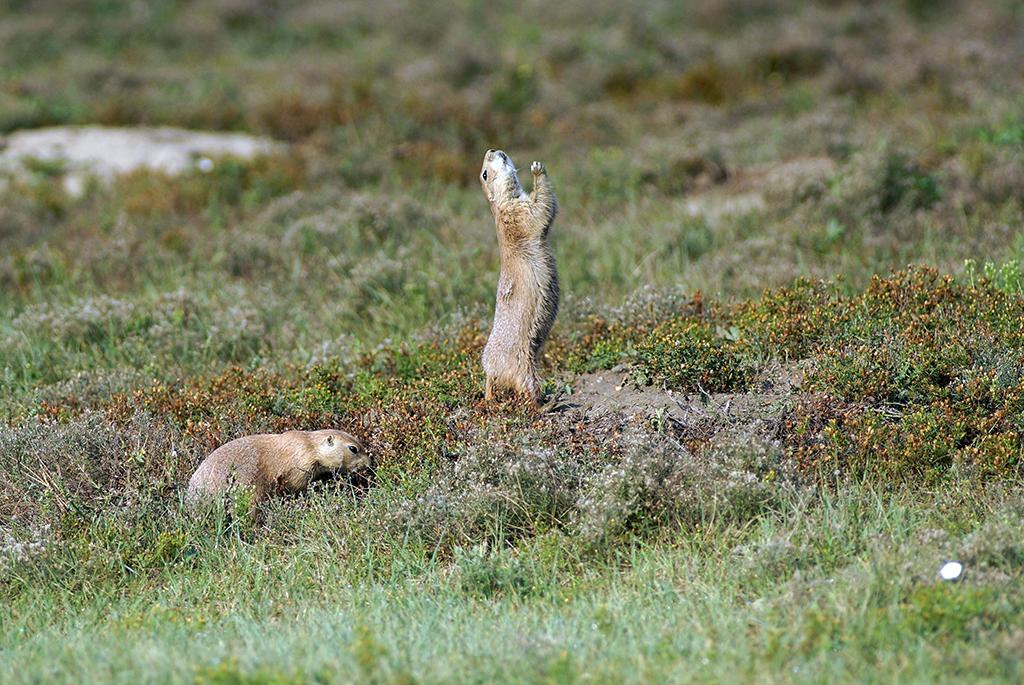Badlands comprise a great portion of Theodore Roosevelt National Park. But that doesn't mean they're lifeless lands. Spend a little time in the park, keep your eyes and ears open, and you might be surprised by what you see.

No, that's not really the campground host, but bison do frequent Cottonwood Campground at Theodore Roosevelt National Park / NPS file
Campers in the Cottonwood Campground in the South Unit often are surprised by bison meandering through the campground. They come to graze the nubs of grass and to enjoy a good rub against the cottonwood trees' thick trunks.

Feral horses are often visible in the South Unit of Theodore Roosevelt National Park / Kurt Repanshek

Mule deer, Theodore Roosevelt National Park / NPS - Albert Myran
Deer, both mule and white-tail, can be found in the park. The white-tails have arrived from the East, where their burgeoning populations have led/pushed them to greener pastures. These are easiest spotted around sunrise and sunset, though at times you might spot them in the middle of the day.
Elk also are found in the park, in the South Unit. Park officials suggest that if you want to spot some of these ungulates you should look in the open grasslands in the Buck Hill area and in the southeastern quarter of the park visible from Interstate 94. Like the deer, these animals are most visible early and late in the day.

Longhorn steer, Theodore Roosevelt National Park / NPS - Nathan King
Longhorn steers, a throwback to the 19th century when trail drives brought longhorn cattle through the region, are kept in the park as a demonstration herd in the park's North Unit. "In mornings and evenings, (longhorn are) usually found drinking water at the bison corral located at the end of the service road spur that begins at mile marker 2.5," the park staff notes.
Pronghorn antelope also live in the park. They can be hard to spot in the North Unit, and somewhat easier to notice in the South Unit, near its northern border.
That's pretty much it for charismatic megafauna. There have been sightings of mountain lions over the years, but those have been extremely rare.
Pay attention along streams -- Squaw Creek in the North Unit is a good area to look -- and you might see evidence of beavers. Porcupines also can be found in Theodore Roosevelt, as can prairie dogs.

Prairie dogs, Theodore Roosevelt National Park / NPS - Jeff Zylland
Overhead you might spot eagles -- the golden variety -- while throughout the riparian areas many bird species flit about.





